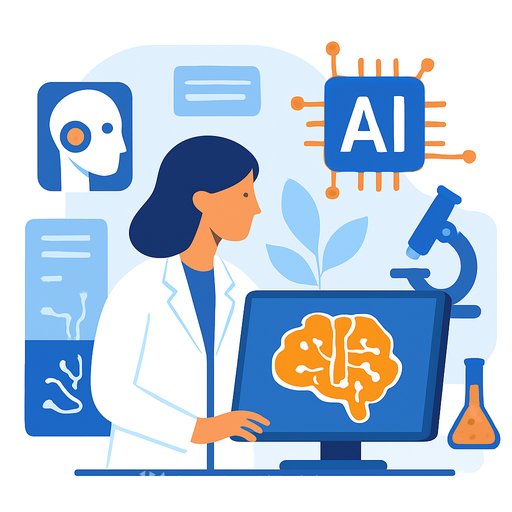A Practical Framework for Implementing and Reviewing AI in Healthcare
Healthcare systems face a critical challenge: balancing innovation with safety when adopting artificial intelligence (AI) solutions. The increasing complexity, ethical concerns, and rapid introduction of AI tools demand efficient, thorough evaluation and ongoing monitoring.
Many current AI evaluation frameworks fall short of providing actionable guidance for healthcare settings. To address this, a practical framework called FAIR-AI (Framework for the Appropriate Implementation and Review of AI) has been developed. It offers clear resources, structures, and criteria to support health systems in both pre-implementation evaluation and post-implementation monitoring of AI tools.
Why a New Framework?
The use of AI in healthcare is growing due to advances in electronic health records and AI methods. While AI has the potential to improve patient outcomes and operational efficiency, premature deployment without proper evaluation can cause harm, including exacerbating health inequities or leading to ineffective care.
Traditional evaluation of clinical decision support tools was simpler. Now, AI models are more complex, often opaque, and rely on massive datasets, making evaluation and monitoring more difficult. Existing regulatory frameworks—such as the European Union AI Act and the FDA’s Software as Medical Device guidance—either lack clarity or practical application for health systems.
Healthcare organizations need a comprehensive, standardized, and repeatable process that is transparent and adaptable. FAIR-AI aims to fill this gap by offering a framework grounded in best practices, stakeholder input, and multidisciplinary expertise.
Key Insights from Research and Stakeholders
- Model Evaluation: Beyond standard metrics like AUC, it’s essential to evaluate calibration, decision thresholds, and real-world validation. For generative AI models, qualitative assessments like expert review and user feedback become crucial.
- Utility and Impact: Assessing whether an AI tool delivers actual benefits requires impact studies examining factors such as workflow integration, user experience, and unintended consequences.
- Ethics and Equity: Transparency in design, development, and implementation is vital. Variables linked to discrimination must be justified carefully, and ongoing monitoring for bias across patient subgroups is required.
- Stakeholder Priorities: Interviews with leaders, providers, developers, and patients highlighted the need for risk tolerance assessments, human oversight, timely review processes, and alignment with organizational priorities and regulations.
Structure of the FAIR-AI Framework
FAIR-AI guides health systems through a clear process with several components:
- Foundational Elements: Organizational principles and ethics statements endorsed by leadership, dedicated data science personnel, escalation processes with multidisciplinary review committees, and an AI inventory system.
- Scope Definition: Inclusion of AI solutions broadly defined as computer systems performing tasks normally requiring human cognitive effort, excluding simple scoring systems, AI-embedded physical devices, and AI under IRB-approved research.
- Risk Evaluation: Qualitative risk assessment involving data scientists, business owners, and experts to identify potential harms and mitigation through workflows. Risk is categorized as low, moderate, or high.
- Two-Step Review: An initial low-risk screening followed by an in-depth review if needed. This balances the need for thoroughness with the agility to keep pace with innovation.
- Post-Review Actions: Low-risk solutions proceed with standard monitoring. Moderate-risk solutions require mitigation plans. High-risk solutions undergo multidisciplinary governance committee review for final decision-making.
- Transparency and Monitoring: Clear communication to end-users and patients about AI use, limitations, and risks. Ongoing monitoring ensures safety and equity remain priorities after deployment.
Risk Categories Explained
- Low Risk: Minor potential adverse effects, clear to users and owners. No ethical or regulatory concerns found during screening.
- Moderate Risk: Non-minor potential adverse effects, but adequately addressed by workflows. Ethical, equity, or compliance issues that are identified and mitigated.
- High Risk: Significant potential adverse effects or unresolved ethical and compliance issues. Insufficient evidence to support safe implementation.
Next Steps After FAIR-AI Review
High-risk AI solutions are escalated to an AI Governance Committee. This multidisciplinary body decides whether the solution can proceed with additional safeguards, requires modification, or should be rejected.
By applying FAIR-AI, healthcare organizations can adopt AI tools responsibly, ensuring that innovation does not come at the expense of patient safety, equity, or compliance. The framework supports continuous improvement and adaptation as AI technology and regulations evolve.
For healthcare professionals interested in practical AI training and upskilling, exploring AI education resources can be valuable. Check out Complete AI Training’s latest AI courses for tailored learning paths designed for healthcare and technical roles.
Your membership also unlocks:






